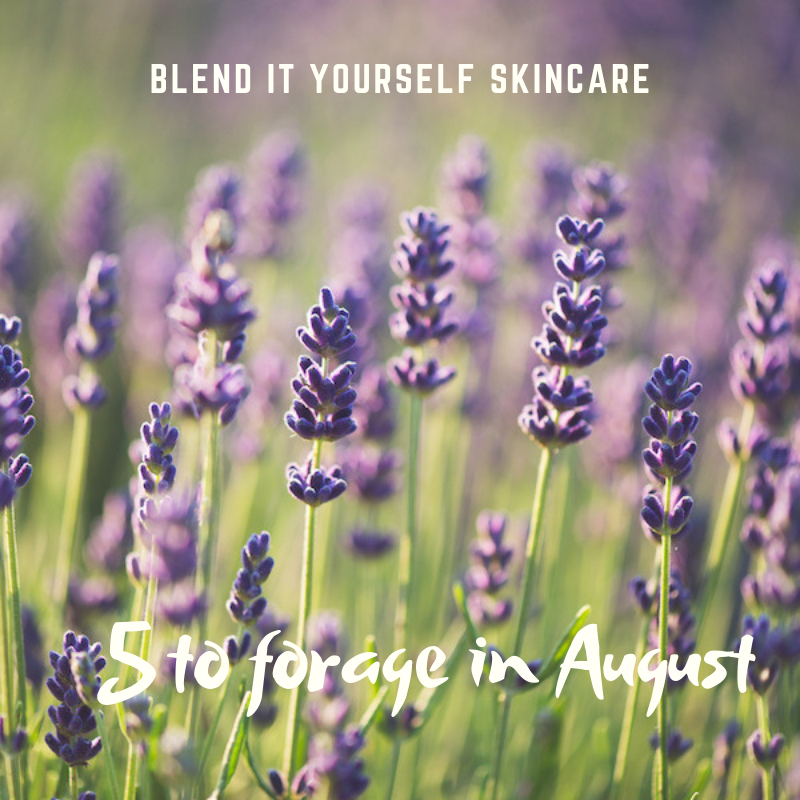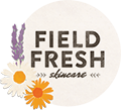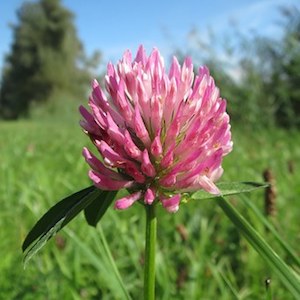
August is the lazy peak of summer, a time when a little disarray seems to be order of the day. Lush growth is now either scorched or squashed, depending on whether you’ve had the searing heat or the overwhelming rain. This season of peak everything can also mean peak exhaustion if you’re a parent juggling work and school holidays. Nature provides what we need, and this month there are plenty of treasures offering calm and joy.
HOPS
Occasionally you may be lucky enough to encounter some wild hops (always worth a hop for joy if you do!). Or alternatively, you can grow your own hops. Our primary use for hops is in beer making where they’re added to help preserve the brew. Have you ever felt a little drowsy after drinking a beer? The volatile (or essential) oils in hops help create a soporific and sedative effect. Not surprisingly therefore, the addition of hops to your skincare is great for creating a relaxing product, something to use at bedtime perhaps, or to calm you and your skin.
A traditional use for dried hops is to include it in a sleep pillow where it’s often blended with herbs like lavender and rosemary. I will also add hops to a calming bedtime bath and in Vital Skincare I include a recipe for lavender and hops nightcream. A soothing evening application of this can help your skin and help you sleep.
Of course beer is sometimes used in cleansing hair. It’s the yeast in the beer that does most the good, but the hops contain B vitamins that can repair damaged hair and boost overall body.
JASMINE
Jasmine is not a native of this country, its origins lie in the tracts of the globe between the Caucaus (Black Sea area) and China. However it’s been growing in Europe since the 16thCentury, brought here by parfumiers as an essential ingredient for their blends.
Jasmine is grown in many gardens, in white, pink or yellow forms for the proliferation of flowers and that glorious evening scent.
A cornerstone of many perfumes, jasmine has a heady note that that can sit in the centre of a blend, holding the scent together. The essential oil of jasmine is considered King of essential oils (alongside rose, the queen), it is actually an absolute, stronger than a normal essential oil. Just one drop of jasmine absolute contains the essence from about 500 blooms.
In aromatherapy jasmine is used to treat emotional upsets and headaches, it is a happy and balanced plant. It can also be helpful to combat intense situations like sunstroke and fevers. In skincare it is considered a good ingredient to use against irritant dermatitis. When jasmine is applied in a body oil it has a reputation as an aphrodisiac.
If you have jasmine flowers in your garden, the simplest way to enjoy them with pure decadence is to toss the flowers into your bath. In Vital Skincare there is a recipe for a rose infused sensual bath which, of course, incorporates jasmine.
I admit to being a Jasmine fan, naming my daughter after the beautiful plant. It’s the luxurious scent in my Essential Sensual Body Moisturiser, a pure treat.
RASPBERRY LEAF
While you’re gathering delicious, juicy raspberries for your summer puddings, sorbets and jams, take a look at the abundance of green leaves that can be providing nutrition for your skin.
You can gather raspberry leaves from when they first appear in spring. This is when they’ll be at their freshest and most vibrant, so if you’re wanting to dry and store, do so then. But they’re still willing to help all through the summer and just a few can create a simple infusion that can be used for cleansing. Such are the cleansing properties of raspberry leaf it is also recommended for treating wounds. You may have come across the tea being recommended in the later stages of pregnancy. This is because it is helpful in strengthening the uterine muscles ready for birth (it shouldn’t be used in early pregnancy).
As well as the raspberry leaf skin cleanser recipe, I also include a raspberry leaf in the toning body oil recipe in Vital Skincare. It’s a lovely product to use on mature skin to keep it soft and supple.
O, and if you start dreaming of raspberries, apparently that’s a good omen for a love affair.
RED CLOVER
Clover has been wonderful this year, both red and white. While white clover is great to gather for making teas, red clover is the one to look out for if you want to blend your own skincare. As with all blend-it-yourself skincare, you’ll only need to gather a few flowers or leaves to make a beneficial product for yourself.
We know livestock love clover, and the smell is enticingly sweet, but why is it good for skincare? The answer lies in its deep tap root. This allows it to draw up a good supply of minerals from the ground.
As summer wanes, these are our last chances in the year to gather clover. Soon the flowers will disappear and we’ll leave it to self-nurture until Spring. You can gather a little extra now and carefully dry it for use thorugh the winter months.
The simplest way to use clover is as an infusion. Gather about 20g of flowers and leaves and cover with a litre of boiling water. Leave to infuse for 10 minutes and strain. Once cooled this can be used as a cleansing and refreshing toner, simply wiped over the skin. Clover has a way of gently soothing skin.
Alternatively you can add your clover to a flower-filled blend for the bath – the Duchess and Dairymaid skin softening bath recipe in Vital Skincare includes clover among its meadowy collection of ingredients. You can also macerate your clover in either oil or honey, both of which can then be used directly on your skin or incorporated into a blend.
Come to the meadow with me in this video and I’ll show you red clover up close.
BUDDLEJA
Buddlejas are the purple-flowered straggly bushes that you see along railways and resolutely clinging to old buildings. They’re everywhere. We also avidly plant them in gardens, especially to attract butterflies, and then need to keep them well pruned and try to prevent them spreading.
Their skills for survival are a good clue that they must be packed with some pretty potent chemistry. Traditional medicine, especially in their native China, has made good use of buddleja for centuries. Recent scientific research has isolated some of the properties that make it a fantastic skincare plant. There’s more about this in my butterfly bush blog, it’s worth reading. Learning about this amazing plant has certainly changed my impression of the ubiquitous shrub.
I haven’t yet experimented with buddleja but will start by trying some infusions and macerations, as different qualities are likely to come out in either the water or the oil. As traditional medicine uses the flowers, that’s what I’ll do too. Do let me know if you try any skincare making with buddleja.
LIKE THE IDEA OF GATHERING YOUR OWN SKINCARE INGREDIENTS? …
… you might like to read some more.
For everything you need to know to get started with Blend-it-Yourself skincare using the plants that grow around you, see Vital Skincare by Laura Pardoe. This book takes you through the techniques and ingredients you’ll need to know to make your own natural skincare.







[…] is one of the plants recommended in August’s ‘5 to forage’ – a blog series in which each month 5 plants are recommended as local ingredients that you […]
Jasmine is my favorite among the list, aside I didn’t know much about its skincare work, but as a flower, its is beautiful, thanks for sharing and keep up with the good work 🙂
Thank you, I agree, jasmine is a beautiful flower and a wonderful scent.